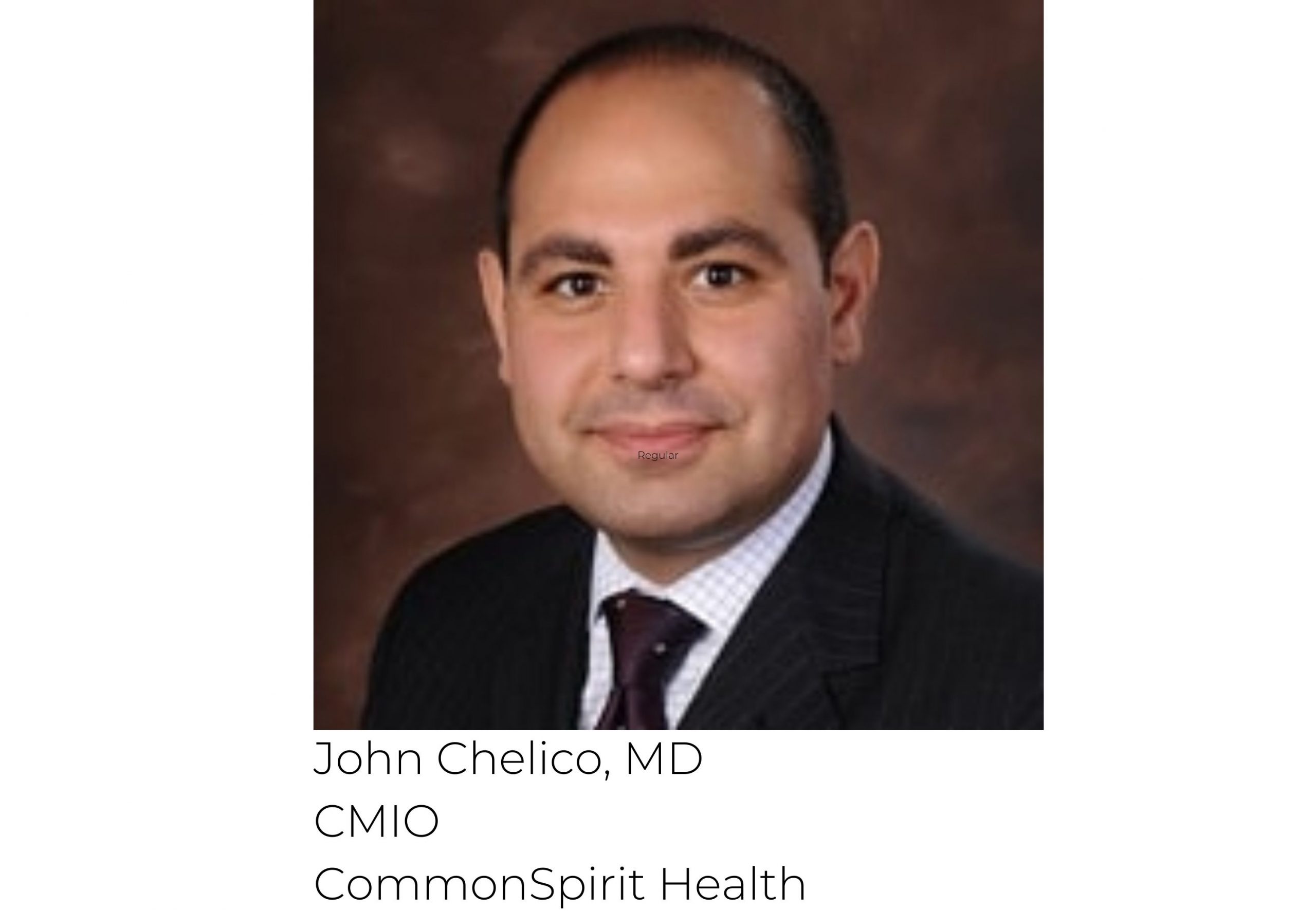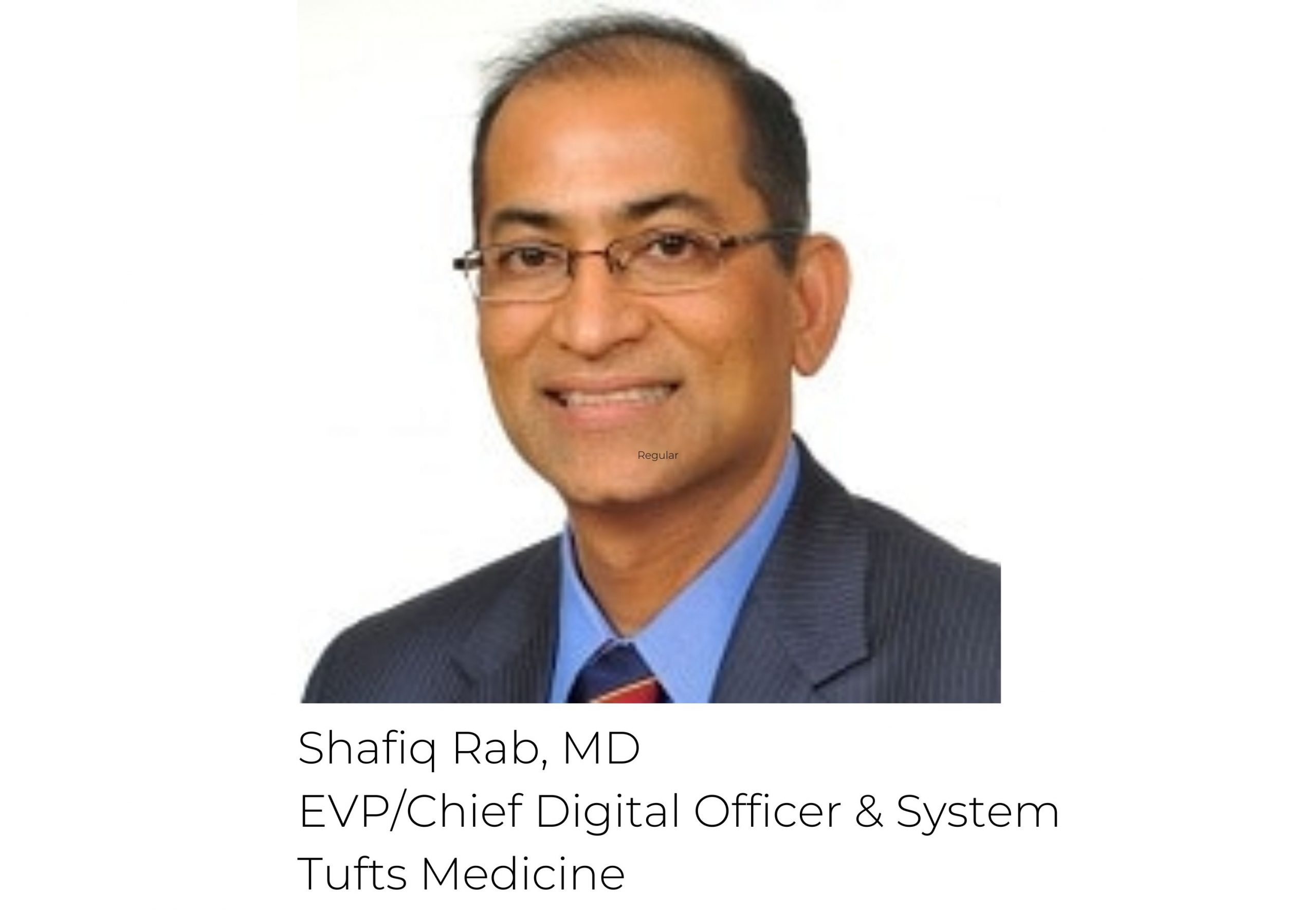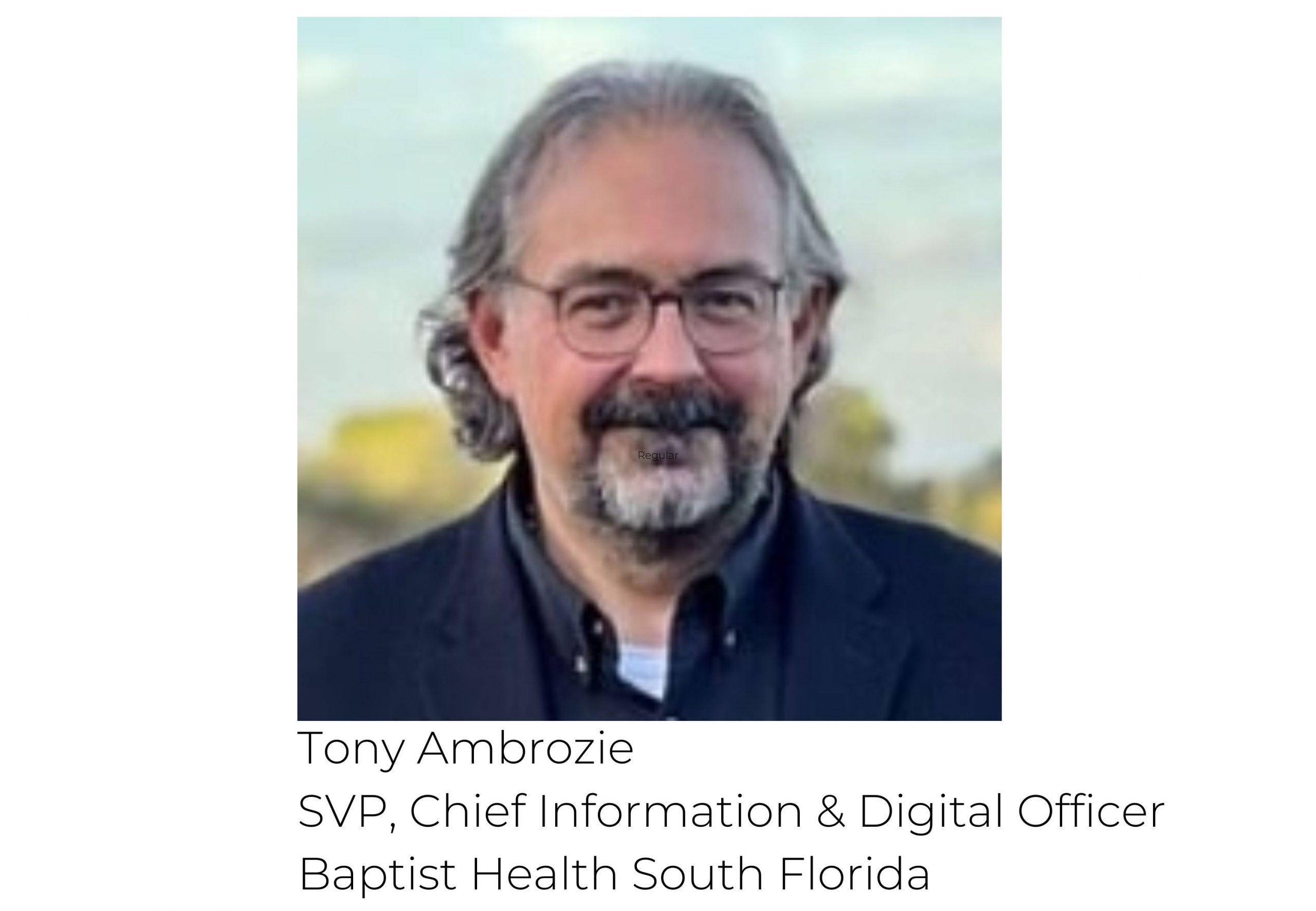“It’s Not a Technical Problem”
HIT leaders Share Insights on How to Turn Data into Valuable Information

By Kate Gamble, Managing Editor & Director of Social Media, healthsystemCIO
Although no two healthcare organizations are the same — whether it’s in terms of size and scope, geographic location, or any number of distinguishing factors — there is one common denominator. The leadership teams at every one of them have been tasked with doing more with fewer resources, especially when it comes to leveraging data to increase efficiencies, improve outcomes and reduce costs.
“We all have the same problems. We need to get to the point where people are using the insights we’re providing to adjust and manage their business or our operations,” said Tony Ambrozie, CDO at Baptist Health South Florida, during a panel discussion. “The question is, how do you get there?”
The answer, according to John Chelico, MD, CMIO at CommonSpirit Health, is to “work smarter, not faster. That’s what it comes down to.”
During the webinar, Chelico, Ambrozio and co-panelists Shafiq Rab, MD (Chief Digital Officer & System CIO, Tufts Medicine) and Damon Auer (Chief Executive & Managing Director, North America, Dedalus Group) talked about their experiences in creating a common data platform and shared strategies for gaining buy-in and capturing quality data.

“Common elements”
The first, and arguably most important component, is to strive for ‘systemness’, said Chelico. “Unless we create a standard way to do things, it’s very hard to get economies of scale and efficiencies.” Doing that at an organization like CommonSpirit, which operates 139 hospitals across 21 states, is no easy task. “We probably have not two of everything, but six,” he noted, adding that each market has its own micro strategies.
By moving to a common EHR and ERP platform, organizations can “start tightening the screws on how we drive efficiencies,” Chelico said. “Without standardizing, it’s very hard to ask much of your IT group. It’s something we really need to focus on.”
At Tufts Medicine, Rab and his team have focused heavily on decreasing the number of applications, which at one point was more than 800. They now have about 300 applications, with plans to get to 129. In addition, they were the first health system to migrate their EHR to Amazon Web Services, and have started moving the data lake house to Microsoft’s Azure. “That strategy has helped us to decrease our cost,” he noted. “We are trying our best to provide intelligence to our leaders, doctors, and nurses so that we can find new ways of growing and improving customer experience.”

“Speed to innovation”
Baptist has also undergone initiatives such as cloud migration to improve processes, according to Ambrozie, who emphasized the importance of participation from different departments. “You can have very efficient IT, but if the rest of the organization isn’t efficient, then it’s just going to be a drop in the ocean.” By working together, leaders can more effectively re-engineer business processes using technologies to become more efficient.
“This is the basis of digital transformation,” he said. “It’s speed to innovation. And unless you have a standard way of doing things, there’s no way for the organization to move forward.”
Chelico agreed, adding having a common set of processes and definitions is vital. “We need a common data platform so we can measure and iterate on that, and have the ability to share best practices.”
According to Auer, helping to solve that has been a driving force for Dedalus, whose solutions are designed to increase patient engagement and support clinical teams by promoting interoperability. “Having a system that allows us to get to the data and actually rationalize the data in a way that allows us to measure and manage – and have a real impact on process change – is our best opportunity to drive efficiency,” he said. “We can only manage what we can measure, and we can only measure what we can see.” Dedalus’ command center, Auer noted, “helps large organizations see things that they can then measure and then manage, and hopefully improve.”
Bringing it all together
Increasingly, organizations are utilizing data lakes or data lake houses — which feature an open management architecture — to store data in a way that it can be more easily consumed. “You have to have a way to bring all the data together so that it makes sense to everybody,” said Ambrozie. When he first arrived at Baptist, the problem (as is often the case) wasn’t a lack of data; but rather, the inability to use it to provide actionable insights.

Creating a data lake is only one step. “You have to decide what you’re going to do with it,” he said, and ensure those goals align with the overall business strategy. “What are they trying to accomplish and achieve? That’s what drives the data they need,” and eventually, enables users to take action on the data.
The objective, according to Auer, is to present information “in a way that our operational leaders can then say, ‘what about this?’ That becomes our guide for how we can refine the data into valuable information for leaders to drive change in the organization.”
No vacuums
That can’t happen, however, without involvement from key stakeholders, noted Rab. “The data has to be meaningful and pleasurable for the end user so they can actually do something with it,” he said. “Without operational leaders participating and actually helping us understand it, nobody will be successful. We need the subject matter expertise, the guidance, and the continuous challenge from our leaders.”
Without that, it can be extremely difficult to ensure that the right data is being collected from the right places, stated Chelico. “We can’t do it in a vacuum. We can develop the fiefdoms, but at the end of the day, our operational folks really need to be engaged. The quality of data starts with entering it properly.”
“A process problem”
This is where IT can make an impact; by working with operational leaders to determine which information is needed to develop enterprise-level reports that can be shared by all different areas of the business. It’s also about developing “a common modality so there’s a common way we define length of stay or volume,” Chelico said. “You don’t want to have every market figuring that out on their own, because the nuances can really kill you,” and it makes it difficult, if not possible, to make comparisons.
IT’s role, Chelico added, is to bring the data together, make it accessible, and create standards “by which we can understand and ask questions of the data.” But it must happen in cooperation with clinical, quality improvement, and finance folks. “Each one has a different view of how to use that data and a common set of ways by which we can interact or even talk about the data,” he said. “The crux of it is, it’s not a technical problem. It’s a process problem. It’s a culture problem in the way we look at data and the way we use data.”
Therefore, leaders need to ensure all stakeholders feel heard, noted Rab. “You have to listen to what the other person is saying and what the fear is, and then you have to explain.” And it can’t be a one-time conversation; rather, “it’s a lifetime of negotiation. It’s a lifetime of talking. It’s a journey. Find partners and bring them along from the beginning.”
Finally, like any challenge, it’s going to require patience and humility, according to Ambrozie. “This stuff is difficult, otherwise it would’ve been solved by now. We need to persevere because it’s of tremendous value,” he said. “Without data, we’re blind.”
To view the archive of this webinar — Data Rich, but Insight Poor? Exploring Strategies for Driving Operational Visibility & Efficiency (Sponsored by Dedalus) — please click here.